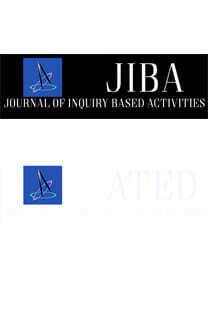FEN ÖĞRETİMİNDE KARİKATÜR KULLANIMI: ISI KAVRAMINA YÖNELİK KONUŞMA BALONU DOLDURMA ETKİNLİĞİ ÖRNEĞİ
Karikatürlerin okul dışı öğrenme ortamlarında önemli bir rolü bulunmaktadır. Ancak, karikatürlerin örgün öğretim sürecinde etkili bir öğrenme etkinliği olarak ne şekilde kullanılabileceği alanyazında süregelen tartışmalardan biridir. Bu çalışmanın amacı ısı kavramı ile ilgili bir dizi kısa karikatür öykü geliştirip bunların gerçek sınıf ortamında öğrenme etkinliği olarak kullanımını değerlendirmektir. Bu çalışma, öğrencilerin sınıfta uygulanan bir öğretimsel müdahaleye ilişkin tepkilerini gözlemlemeyi ve açıklamayı amaçlayan bir örnek olay araştırması olarak tasarlanmıştır. Bu çalışma kapsamında her birinin içinde boş konuşma balonları bulunan ısı kavramı ile ilgili altı kısa karikatür geliştirilmiş ve bir grup 6. sınıf öğrencisine boşlukları doldurma etkinliği olarak uygulanmıştır. Bu etkinlik sırasında pek çok öğrencinin karikatür öykülerdeki boşlukları çeşitli yanlış ifadelerle doldurdukları gözlemlenmiştir. Öğrencilerin yazdığı yanlış ifadelerin öğrencilerin sahip olduğu önkavramları tespit edip gidermeye yönelik önemli dönütler içerdiği sonucuna ulaşılmıştır.
COMICS IN SCIENCE TEACHING: A CASE OF SPEECH BALLOON COMPLETING ACTIVITY FOR HEAT RELATED CONCEPTS
Comics have an important role in non-formal learning environments. However, how comics may beeffective teaching/learning activitities in formal education is an ongoing debate in literature. Thepurpose of this study is to create and evaluate a series of instructional comics about heat relatedconcepts to be used as teaching/learning activities in real classroom settings. This research is designedas a case study aiming to observe and explain students’ reactions to the implementation of aninstructional intervention. In this study, six instructional comics about heat related concepts havingempty speech balloons were constructed and implemented to a group of 6th graders as ballooncompleting activities. It was observed that many students completed empty balloons with severalwrong statements, and it was concluded that students’ wrong statements have crucial feedback fordealing with students’ preconceptions about science concepts.
___
- Beard, C., & Rhodes, T. (2002). Experiential learning: Using comic strips as 'reflective tools' in adult learning. Journal of Outdoor and Environmental Education, 6(2), 58.
- Cheesman, K. (2006). Using comics in the science classroom. Journal of College Science Teaching, 35(4), 48.
- Hadzigeorgiou, Y., & Stefanich, G. (2000). Imagination in science education. Contemporary Education, 71(4), 23.
- Jee, B. D., & Anggoro, F. K. (2012). Comic cognition: Exploring the potential cognitive impacts of science comics. Journal of Cognitive Education and Psychology, 11(2), 196-208.
- Keogh, B., & Naylor, S. (1999). Concept cartoons, teaching and learning in science: An evaluation. International Journal of Science Education, 21(4), 431-446.
- Koutnikova, M. (2017). The application of comics in science education. Acta Educationis Generalis, 7(3), 88-98.
- Lin, S. F., Lin, H. S., Lee, L., & Yore, L. D. (2015). Are science comics a good medium for science communication? The case for public learning of nanotechnology. International Journal of Science Education, Part B, 5(3), 276- 294.
- Olson, J. C. (2008, May 2). The comic strip as a medium for promoting science literacy. Retrieved from http://www.csun.edu/jco69120/coursewo rk/697/projects/OlsonActionResearchFi nal.pdf
- Rota, G., & Izquierdo, J. (2003). " Comics" as a tool for teaching biotechnology in primary schools. Electronic Journal of Biotechnology, 6(2), 85-89.
- Song, Y., Heo, M., Krumenaker, L., & Tippins, D. (2008). Cartoons-An alternative learning assessment. Science Scope, 31(5), 16-21.
- Sözbilir, M. (2003). A review of selected literature on students’ misconceptions of heat and temperature. Boğaziçi University Journal of Education, 20(1), 25-41.
- Spiegel, A. N., McQuillan, J., Halpin, P., Matuk, C., & Diamond, J. (2013). Engaging teenagers with science through comics. Research in Science Education, 43(6), 2309-2326.
- Yin, R. K. (2003). Case study research: Design and methods (3rd ed.). Thousand Oaks, CA: Sage.
- ISSN: 2146-5711
- Yayın Aralığı: Yılda 2 Sayı
- Başlangıç: 2011
- Yayıncı: Evrim Erbilgin
Sayıdaki Diğer Makaleler
TEORİ VE KANUN: GİZEMLİ DOĞRULAR ETKİNLİĞİ
HASAN ÖZCAN, Mehmet Fatih TAŞAR
ETKİLEŞİMSEL FARKINDALIĞI ARTTIRMAK İÇİN KONUŞMA ÇÖZÜMLEMESİ TEMELLİ PEDAGOJİK BİR ETKİNLİK DİZİSİ
Ufuk BALAMAN, Nilüfer CAN DAŞKIN
FEN ÖĞRETİMİNDE KARİKATÜR KULLANIMI: ISI KAVRAMINA YÖNELİK KONUŞMA BALONU DOLDURMA ETKİNLİĞİ ÖRNEĞİ
Ertuğrul ÖZDEMİR, Ali ERYILMAZ
İZLE –DÜŞÜN- TARTIŞ: SOSYO-BİLİMSEL KONULARIN ÖĞRETİMİNE İLİŞKİN BİR ETKİNLİK ÖRNEĞİ
UFUK BALAMAN, NİLÜFER CAN DAŞKIN
COMICS IN SCIENCE TEACHING: A CASE OF SPEECH BALLOON COMPLETING ACTIVITY FOR HEAT RELATED CONCEPTS
ERTUĞRUL ÖZDEMİR, ALİ ERYILMAZ
KUVVETİN ÖLÇÜLMESİ VE SÜRTÜNME ÜNİTESİNE YÖNELİK FeTeMM ETKİNLİKLERİ GELİŞTİRİLMESİ
